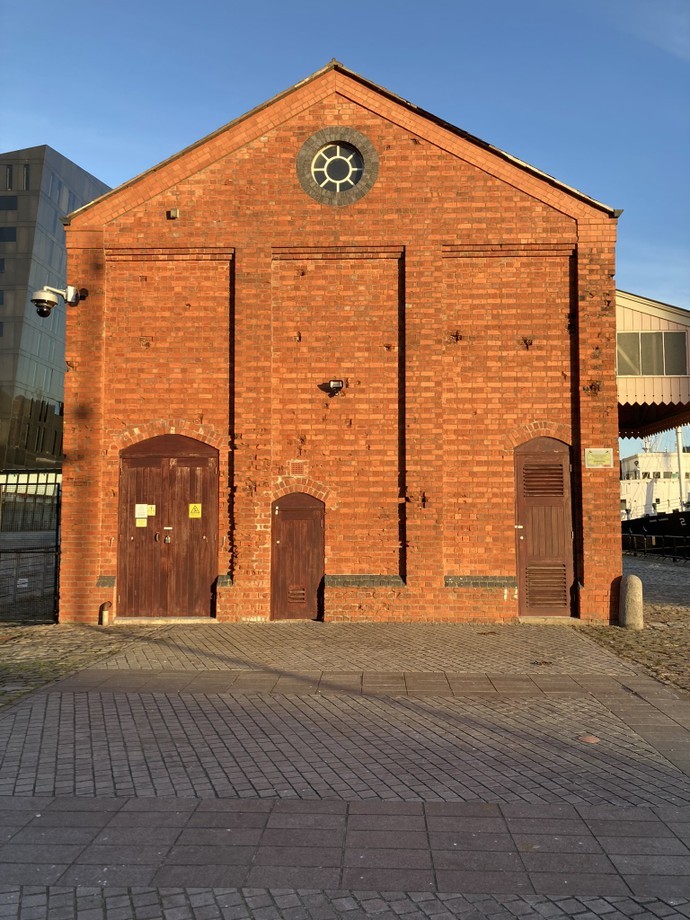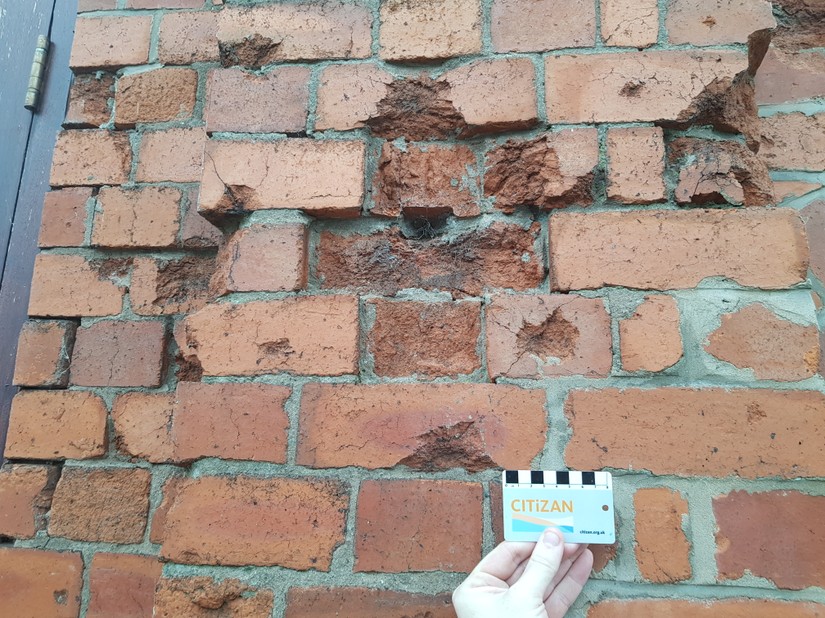The scars of war
19/02/2022 | Andy Sherman
A vast number of incendiary bombs, high explosive bombs, naval mines and parachute mines were dropped around Liverpool Bay during the Second World War. The first raid that targeted the area attacked Blackpool, Southport and the Ribble Estuary on the 19th July 1940 when naval mines were dropped into Liverpool Bay. The first attack against a built-up area occurred ten days later when Altcar was bombed, although no causalities were reported. In the months that followed this would change drastically.

The picture above shows the view around Derby Square in the heart of Liverpool around 1942. To the right of the photograph is the domed structure of the Victoria Monument, while in the distance the burnt-out remains of the Customs House (marked by the round tower) can be seen on the edge of the docks.
After the war, these destroyed buildings were slowly replaced and damages to still-standing buildings repaired, as can be in the Google Street View of Derby Square today. The Victoria Monument can again be seen on the right of the image.
If you look carefully at some of the buildings and monuments around Liverpool though you can see where this bomb damage was never repaired. One of these places is on the west face of the GWR building beside Canning Dock. Built around 1890 this warehouse stored goods brought across the River Mersey from the Great Western's Railways railhead at Birkenhead. Cargo could then be loaded onto ships to be transported around the world. Sitting at the heart of Liverpool's oldest set of docks it was in the middle of one of the Luftwaffe's primary targets. As a result it is pockmarked with bomb splinter damage.

It's difficult to say exactly when this building was damaged by the Nazi bombing, as the City's dock infrastructure was regularly targeted. However, it is likely that damage occurred during the 'May Blitz' of 1941, when Liverpool was bombed for seven consecutive nights from the 1st - 7th May. As on the 5th May bombing reports note damage to warehouses at Canning Dock.
During the night of the 2nd May three parachute mines were spotted floating into the docks around the GWR building, landing in Salthouse Dock, the Canning half-tide basin and Albert Dock. This last mine was described by Lieutenant Nicholas Monsarrat aboard HMS Campanula.
"Campanula herself came nearest to dissolution from a huge landmine which, floating down by parachute and silhouetted against this bombers' moon, fell into the dock-basin with a gentle splash (Hughes 1993)."
These mines did explode on landing and efforts were made to defuse them the following day. Tragically for one of the bomb disposal crews, the mine they were working on exploded and all of the team were lost.
During the raids, it was estimated that 51,000 people had been made homeless in Liverpool and 25,000 in Bootle. Once the raids had passed it was determined that 4400 houses had been totally destroyed during the seven days and 235 unexploded bombs were reported across the city (Whitworth 1988; Hughes 1993).

The CITiZAN North team took members of the Museum of Liverpool's emerging archaeologists group out to record some of this bomb splinter damage in October 2021. We hope to be able to do more analysis of the damage at a later date.

Hughes J, 1993, Port in a storm: The air attacks on Liverpool and it's shipping in the Second World War
Whitworth R, 1988, Merseyside at war: a day-by-day diary of the 1940-1941 bombing








